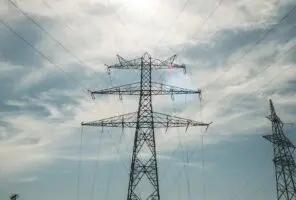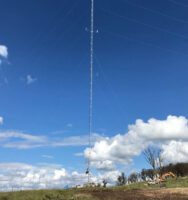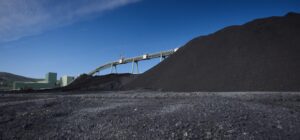David Griffin, chief executive of the hugely ambitious Sun Cable project, says the looming threat of carbon border adjustment taxes from governments in Europe, Asia, the US and elsewhere will turbocharge demand for clean energy in Southeast Asia, providing major opportunities to export Australia’s solar resources.
Griffin says Southeast Asian countries rely heavily on fossil fuels to generate electricity – electricity that is expensive even before border taxes. For manufacturers, this means the embodied CO2 emissions in their products are extremely high, and will therefore attract high carbon border charges, potentially pricing their products out of some major consumer markets.
That means South East Asian manufacturers will soon be crying out for affordable, clean energy, and Griffin says he is already eyeing opportunities to build more submarine transmission cables to carry Australian solar energy to the region.
The $26 billion Sun Cable project, backed by billionaires Mike Cannon-Brookes and Andrew Forrest, plans to build 14 gigawatts of solar capacity in the Northern Territory backed up by around 30 gigawatt hours of battery storage, and transmit the electricity generated to Singapore via a 3,750km submarine cable. When it is up and running it hopes to meet around 15 per cent of Singapore’s total electricity demand.
The project is a good seven years away from completion. Work has not even begun on the factory in Darwin that will build the first solar arrays. Griffin says that will start in the next few months, with the first Maverick solar arrays – pre-fabricated arrays designed by Australian company 5B that require much less onsite work than traditional arrays – coming off the production line in the first half of next year.
The factory will eventually have five production lines, and will be able produce around 3 to 4 gigawatts-worth of arrays a year.
While the 14GW solar farm half way between Darwin and Alice Springsis being built, the cable also needs to be laid along the ocean floor. The first electrons probably won’t reach Singapore until 2027, and won’t be fully up and running until 2028.
A lot could change in seven years, especially in the rapidly evolving world of clean energy. But Griffin is confident this is a business model that can be scaled up.
“Electricity demand in Southeast Asia is growing at 6 per cent per annum … That’s doubling the electricity demand every 12 years,” he told the Smart Energy Conference in Sydney this week.
“They’re using dirty inputs into their electricity supply which means the products they make are dirty, which means that they are exposed to carbon border adjustment mechanisms. I note increasingly broadly across the different government bureaucracies that exist throughout the ASEAN governments, South Korea, Japan, Canada, China, UK, EU and potentially the US are all working on the introduction of carbon border adjustment mechanisms.
“So if you make your products using dirty inputs, you will get your price adjusted upwards when it gets to the border, and they’re increasingly aware that they need to find alternate sources.”
But he said these countries do not have anything like the solar resources Australia has, meaning there is huge potential to export that solar energy if the business model is right.
“Our projects generally … are a combination of three technology groups. That’s high voltage direct current transmission, solid technology and battery storage. All those technologies are ready and able to be deployed on a massive scale to exploit abundant renewable energy resource and transmit that over extreme distances and deliver it to large and growing loads.
“The trick from Sun Cable’s perspective, is understanding how to optimise that to achieve the best outcome. So we’ve got to deliver a competitively priced product, whilst having regard for the levels of resilience and reliability that the customers and regulators demand.”
He said the technology was already good enough to deploy “on a massive scale”, and would improve as times goes.
Griffin told RenewEconomy Sun Cable was “actively working” on opportunities beyond Singapore, and had no intention of stopping with the current project. But he said these plans were at “a very early stage”.
Currently the European Union is likely to be the first jurisdiction in the world to introduce a carbon border adjustment tax, after European Parliament earlier this year adopted a resolution to put one in place. Precise details of how the tax would work are expected in June, but it would target emissions intensive imports from jurisdictions that, unlike the EU, are not subject to emissions trading schemes or a carbon tax. It would likely come into force in 2023.










